Explore the creative process of turning simple yarn into beautiful flowers in this step-by-step guide.
Creating yarn flowers is a delightful way to add a dash of creativity to your knitting or crocheting projects. This quick and easy guide will walk you through the process of making your own yarn flowers, suitable for beginners and experienced crafters alike.
From choosing the right yarn and tools, to step-by-step instructions on various techniques, this article covers it all. Whether you’re looking to embellish a homemade hat, create a unique brooch, or simply add a decorative touch to a gift, these yarn flowers are the perfect solution.
Dive in to discover the joy and satisfaction of crafting your own yarn flowers.
Key takeaways:
- Choose the right yarn, tools, and embellishments for your yarn flowers.
- Consider the type, texture, and color of the yarn for desired results.
- Follow a step-by-step guide to create basic yarn flowers.
- Enhance your yarn flowers with color combinations and embellishments.
- Use yarn flowers for home decor, accessories, gifts, seasonal decorations, and jewelry.
Materials You Will Need for Creating Yarn Flowers
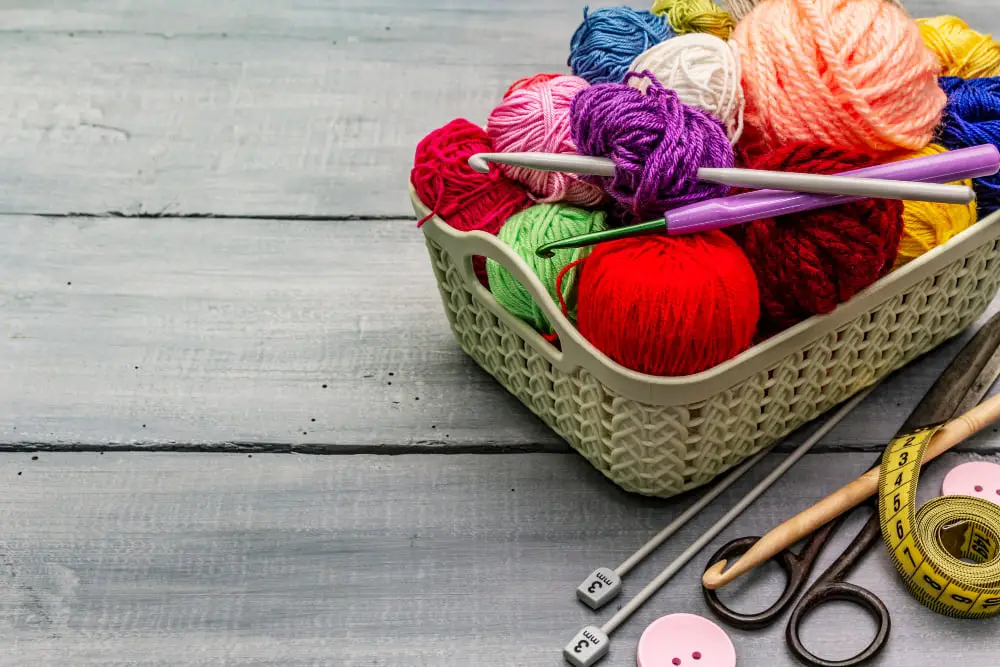
Securing all the essential materials beforehand ensures a smooth and hassle-free crafting process. A variety of yarns can be used, with cotton, wool, and acrylic being common choices because of their durability and colorfastness. Different thicknesses and textures can add depth and layering to the final product.
A crochet hook appropriate for the yarn thickness is key. A typical size can range from 1.5mm to 6mm, but the label of the yarn will suggest the best hook size to use.
Scissors will be required to cut and trim the yarn. A pair with a finely honed blade ensures a crisp, clean cut.
You will need a darning needle to sew the parts of the flower together, and this needle should have an eye wide enough to accommodate the yarn.
Also, opt for sewing thread in a color that is complementary to the yarn to prevent it from standing out.
Lastly, optional embellishments can include bead or button centers to add an extra tactile and visual element to your yarn flowers.
Remember, quality materials will promote not just a better end result, but a more enjoyable crafting experience.
Tips On Choosing the Right Yarn for Flower Making
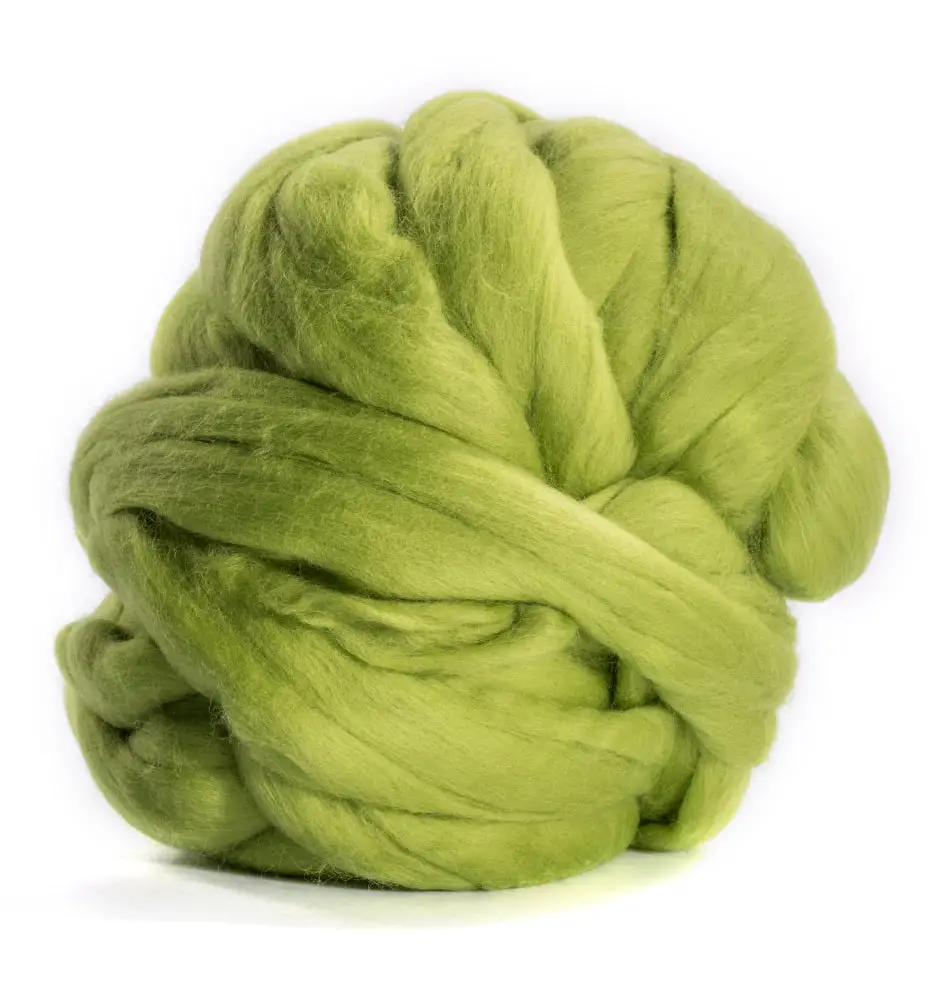
Consider the type of flower you wish to create. Bulky and thicker yarns are great for larger, fuller flowers while lightweight or thinner yarns are better for smaller, delicate blooms.
Consider the texture of the yarn. Smooth yarn will give the flower a neat, defined appearance, while a more textured yarn will result in a rustic-flavored, interesting look.
Think about the color. You can stick to a single color for a classic look or mix and match several colors for an eye-catching, vibrant appearance. Variegated yarns can also be used for multi-colored effects.
Consider the fiber content. Acrylic yarns are affordable and easy to work with, making them a popular choice. Wool is soft and warm, while cotton is cooler and has a more refined finish. Your selection may depend on the final use of the flower.
Remember to take into account the care instructions of the yarn. Some yarns are machine washable, while others require hand washing and drying flat.
Choosing the right yarn is an essential step to make stunning yarn flowers. Experiment with different types to find what works best for your project.
Step-by-Step Guide On Creating Basic Yarn Flowers
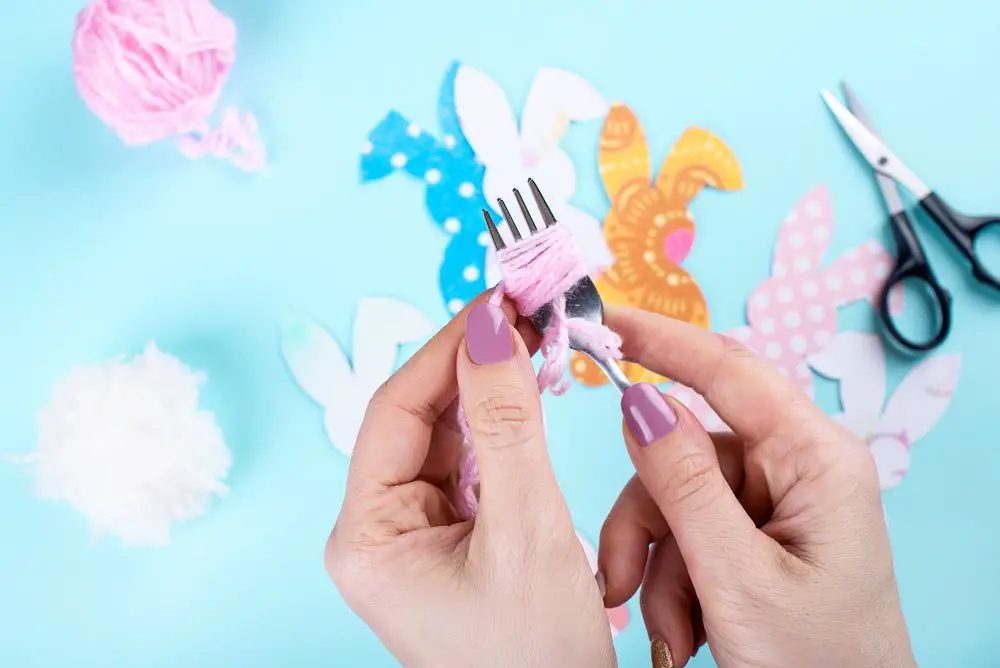
Begin by gathering all necessary tools and materials which include yarn in the intended color, a pair of scissors, and a fork.
Position the fork on a flat surface and start wrapping the yarn around the fork multiple times to form a bundle. While maintaining tension, ensure that the wrapping is snug but not overly tight.
Once content with the thickness of the yarn wrap, cut the end of the yarn from the ball. Now, cut another piece of yarn, about ten inches long, and thread it through the middle tine of the fork. Pull this piece of yarn to the back, tying it tightly around the wrapped yarn.
Remove the wrapped yarn from the fork gently, the structure should somewhat resemble a bow at this stage.
Move on to cutting the loops of the bow on either side with a pair of sharp scissors. This gives the flower its ‘petals’. Then fluff and arrange these cut loops to form a circular, flower-like shape.
Proceed to trim any uneven strands to ensure that the yarn flower has a neat and symmetrical appearance.
Make variations to this basic design by using different types of yarn, creating multiple layers, or by altering the size and the tightness of the wraps.
Remember, patience and practice are certainly your allies in this craft. With these easy-to-follow steps, crafting beautiful yarn flowers becomes a pleasant, stress-free hobby.
Enhancing Your Yarn Flowers: Embellishments and Color Combinations
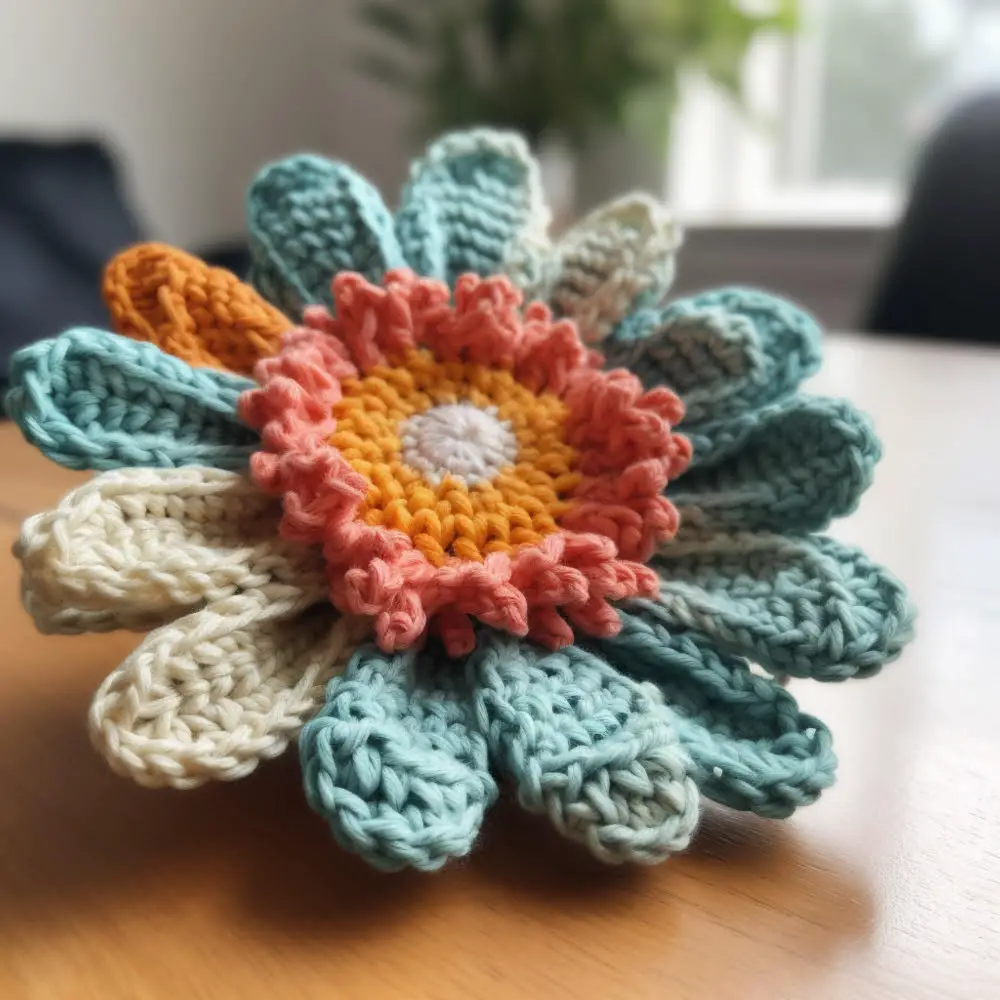
Consider these tips for enhancing the visual appeal of your yarn flowers:
- Experiment with multiple shades: Using more than one color can create depth and dimension. Try blending shades of the same color, such as light pink with dark pink, for a gradient effect.
- Contrast colors: For a striking look, choose yarns that contrast sharply. A black center with bright red petals makes for a bold statement.
- Incorporate different texture: Mixing yarn types can add interesting textures to your flowers. Combine smooth and fluffy, or shiny and matte yarns, to create this effect.
- Add embellishments: Beads, sequins, buttons, or ribbons provide additional layers of interest. You can stitch these onto the flower’s center or randomly on petals.
- Experiment with the center: Twist, braid, or coiling yarn can create visually interesting centers.
- Layer petals: Creating several layers of petals in different sizes can add more depth to your flowers. Make sure each layer is slightly smaller than the one beneath it.
Practicality is also key. Think about where the flower will be used before choosing the color scheme and embellishments. For instance, if you’re adorning a child’s headband, consider using child-safe embellishments and softer shades of yarn.
Creative Ideas for Using Yarn Flowers in Decor and Crafts
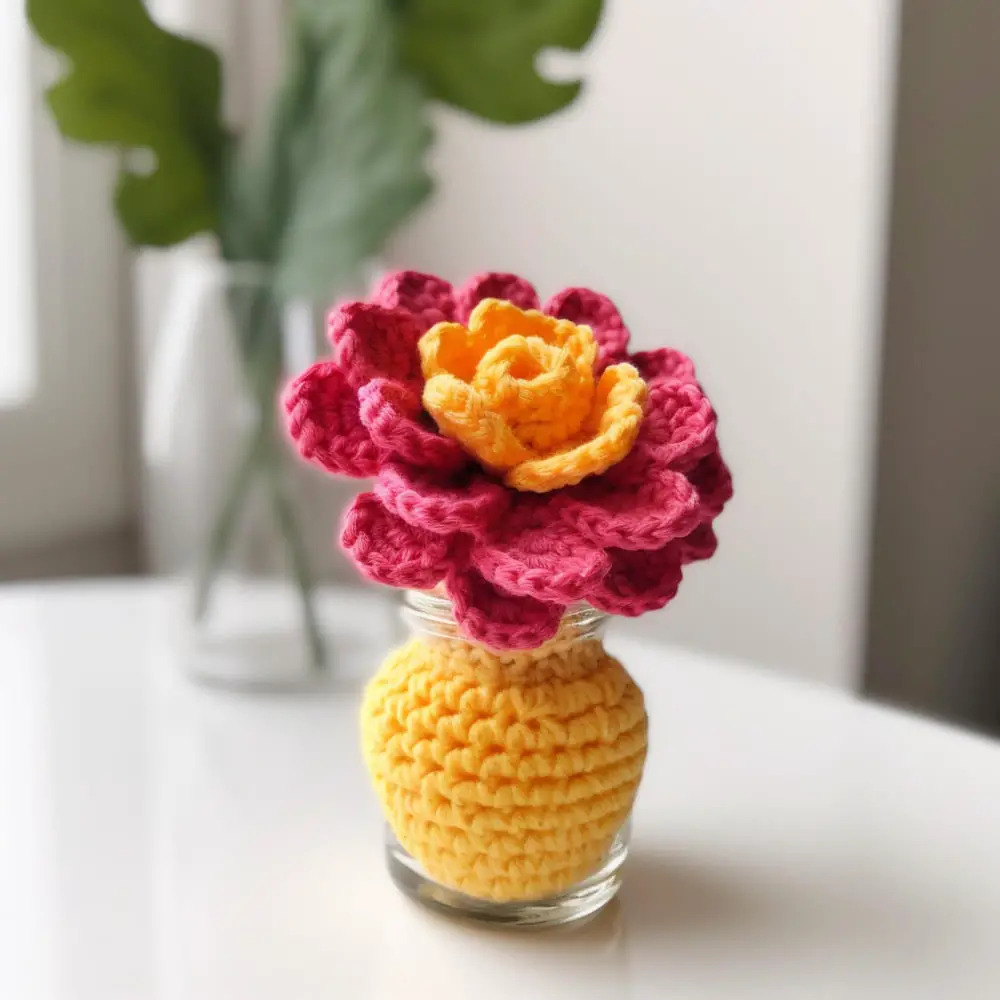
Yarn flowers, with their vibrant colors and soft texture, can serve as a delightful addition to various crafts and décor projects. They can either be the star of the show or add a charming detail to a larger design. Here are some creative ways to utilize these beautiful creations:
- Home Décor: Attach yarn flowers to wreaths for a warm, welcoming display on your front door. They can also be strung together to create a pretty and colorful garland, perfect for special occasions or everyday decoration.
- Clothing Accessories: Yarn flowers can be used to jazz up your wardrobe. Sew them onto your bags, scarves, or clothes for a unique, personal touch. You can also attach yarn flowers to hair ties, headbands, and brooch pins.
- Gift Embellishments: Elevate your gift-giving game by using yarn flowers as an extra special touch on gift wrapping.
- Seasonal Decorations: Depending on the colors and design, yarn flowers can be used for various seasonal decorations. From spring centerpieces to Christmas ornaments, the possibilities are endless.
- Jewelry: Attach yarn flowers to earring backs or glue them onto a pendant base for a quirky, one-of-a-kind piece of jewelry.
Remember, the beauty of handmade crafts lies in their uniqueness and imperfections, so don’t be afraid to customize and experiment with your yarn flowers!
Troubleshooting Common Issues When Making Yarn Flowers
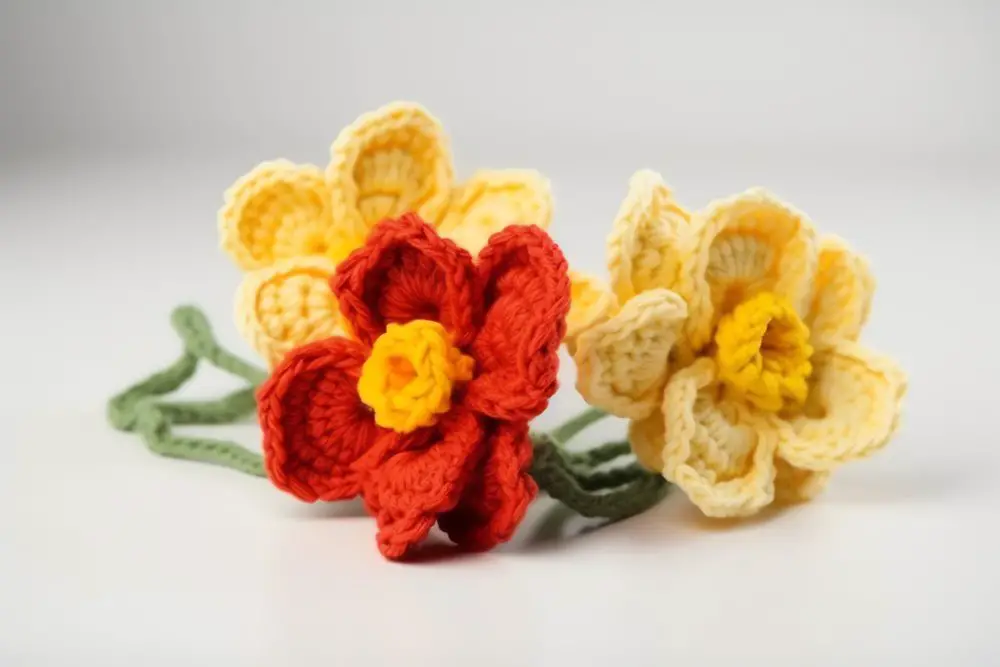
It’s not uncommon to encounter few challenges if you venture into the realm of yarn flowers. Here are some issues and solutions:
- Misshapen Petals: This may be a result of uneven tension in your yarn. Strive to maintain a consistent pull on the yarn for uniform petals.
- Flowers Unraveling: Be sure to secure your end stitches sufficiently. Using a darning needle can help weave the end of your yarn through your flower to secure it.
- Struggling with Complexity: If you find a pattern too challenging, revert back to simpler patterns and incrementally increase the level of difficulty as your skills improve.
- Difficulty in Florals Resembling Actual Species: Remember, your flowers do not need to look exactly like a specific species. Abstract and whimsical interpretations are just as beautiful and are often easier for beginners.
- Color Decisions Overwhelming: Try starting with a limited color palette. This reduces the anxiety of color choice and helps in getting the hang of the process.
Remember, like any craft, creating yarn flowers requires patience and practice. Don’t be discouraged by initial imperfections, they’re a part of the learning curve. Incorporate these solutions to overcome common obstacles. Experiment with patterns, yarn types, and colors. With time, you will be producing a prolific bouquet of yarn flowers.
How to Care for Your Yarn Flowers
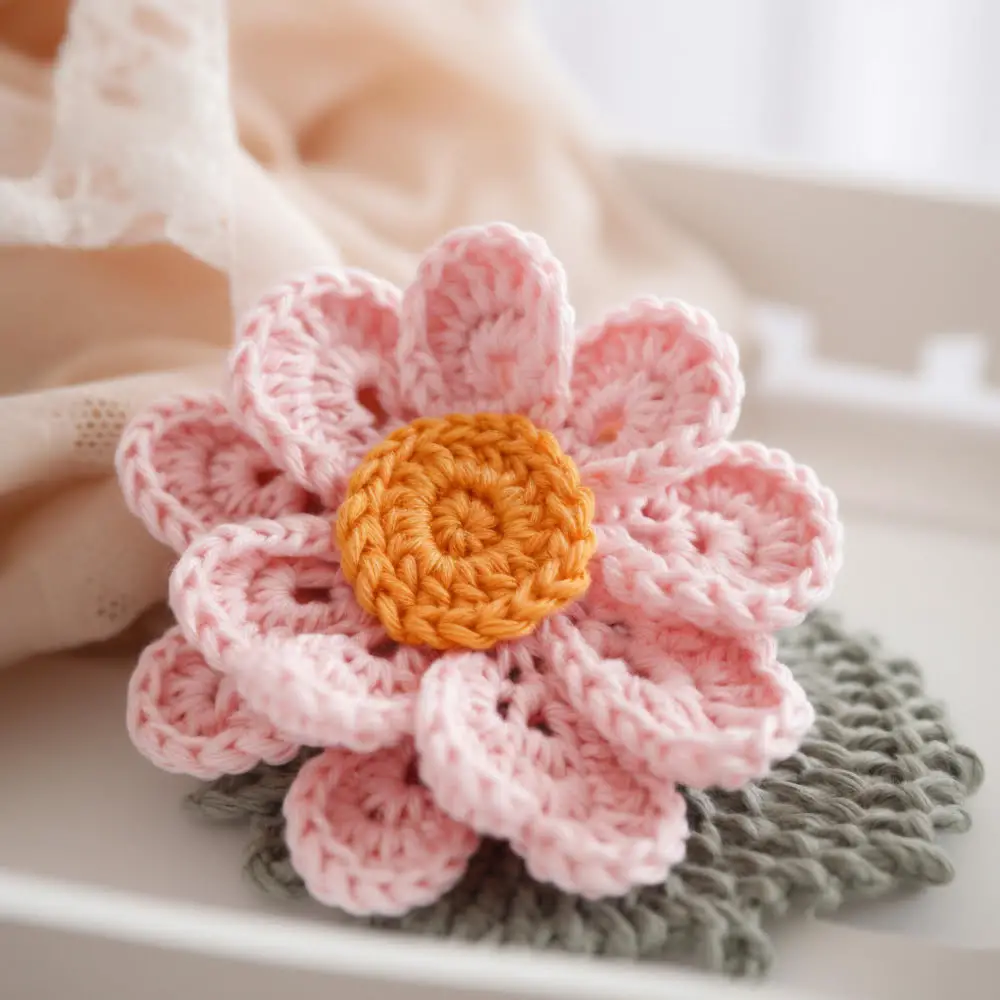
To ensure the longevity and vibrant colors of your yarn flowers, certain care guidelines need to be followed.
Firstly, keep them away from direct sunlight as long-term exposure may lead to color fading. Alternatively, opt for using UV-protected yarn for flowers that will be displayed in sunlit areas.
Cleaning your yarn flowers is another aspect of care. To dust your yarn flowers, a quick blow using a hairdryer on a cool setting should suffice. For tougher dirt spots, gently dab the tainted area using a cloth lightly dampened with lukewarm water and mild soap, then let them air dry.
Storing your yarn flowers is also key to their preservation. Keep them in a dry and cool environment, away from dampness that could potentially encourage the growth of mold. Using acid-free tissue paper to wrap them can help in maintaining their shape and color when they are not in use.
Last but not least, handle your yarn flowers gently at all times to prevent damage to their delicate structure.
FAQ
What are the different techniques for creating yarn flowers using knitting and crocheting methods?
Yarn flowers can be created using both knitting and crocheting methods through techniques such as French knitting or spool knitting, and crochet techniques such as the magic circle method, puff stitch, and chained loops.
How can you incorporate yarn flowers into larger knitting or crocheting projects?
Yarn flowers can be incorporated into larger knitting or crocheting projects by attaching them as accents on hats, scarves, or bags or as a standalone applique.
What are some creative ways to use yarn flowers as standalone decorative elements?
Yarn flowers can be creatively used as standalone decorative elements by attaching them to hair accessories, brooches, wreaths, or gift wrapping.
